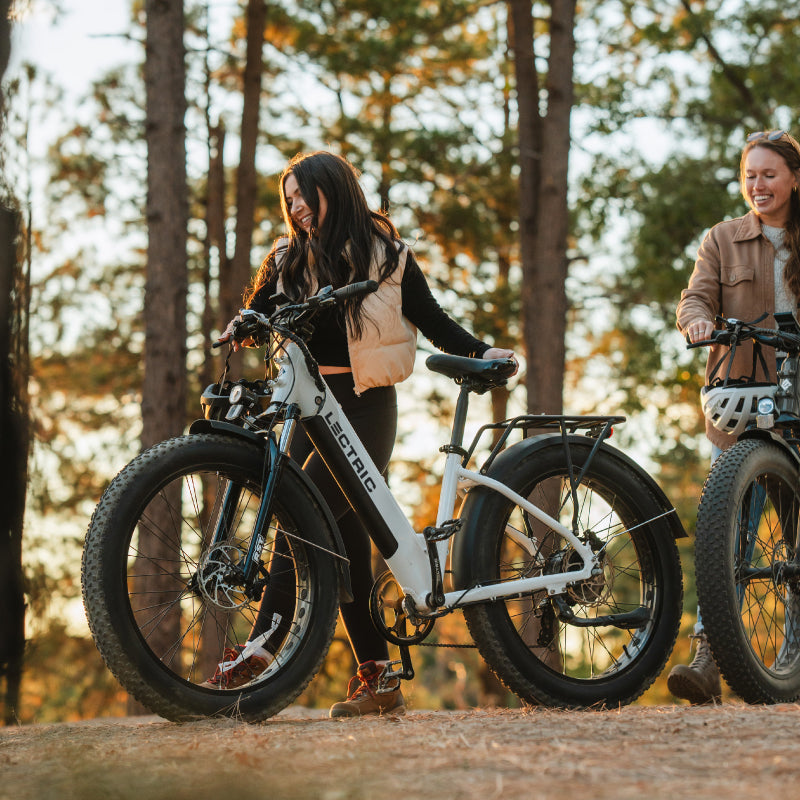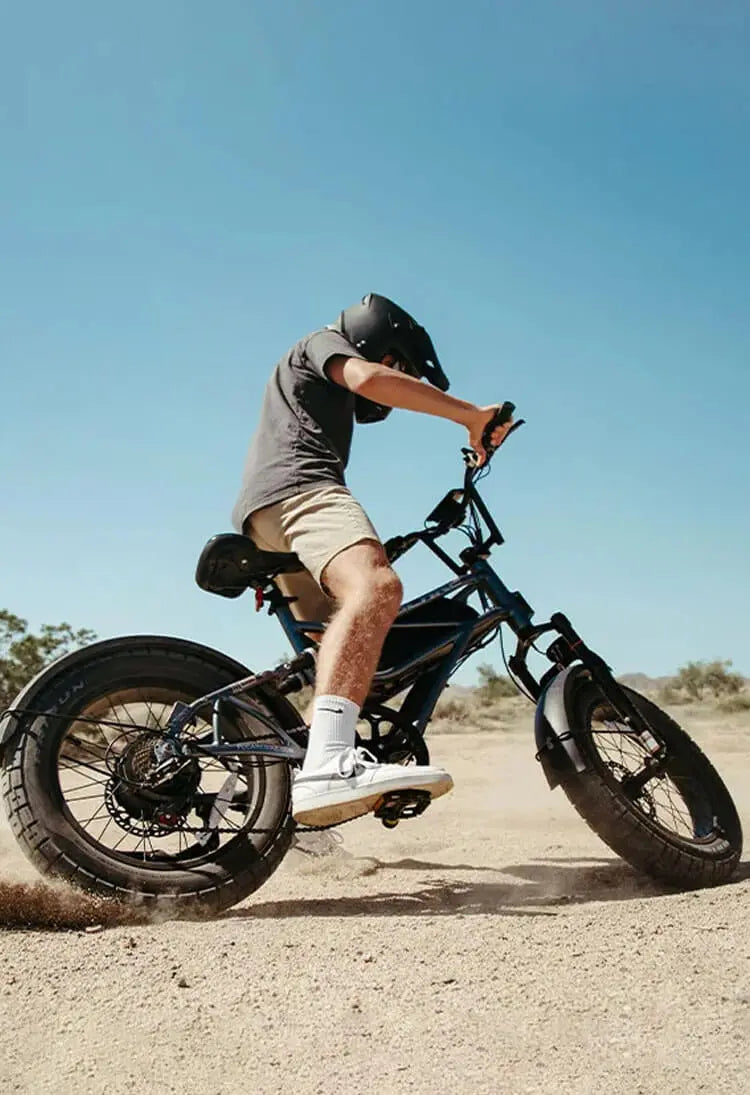In recent years, electric bicycles, or e-bikes, have revolutionized the way we commute and explore our surroundings. As technology advances and battery capacities grow, e-bikes are no longer confined to city streets and paved paths. Enter the realm of electric bike off-roading, where adventure seekers and nature enthusiasts find a new dimension of excitement and freedom. This article delves into the exhilarating world of off-road e-biking, covering its appeal, key features, safety considerations, and environmental impact.
Understanding the Allure of Electric Off-Road Biking
The allure of electric bike off-roading lies in its ability to conquer challenging terrains effortlessly, opening up previously inaccessible trails and paths. Unlike traditional mountain bikes, e-MTBs (electric mountain bikes) provide pedal assistance, allowing riders to tackle steep inclines, navigate rocky paths, and maintain higher speeds with less physical exertion. This fusion of technology and adrenaline offers a unique outdoor experience that bridges the gap between hiking and motorcycling, appealing to thrill-seekers of all ages and fitness levels.
Key Features of Off-Road E-Bikes
Power and Motor Types
At the heart of every off-road e-bike is an electric motor, typically located in the hub of the wheel or integrated into the bike’s bottom bracket. Hub motors offer simplicity and ease of maintenance, while mid-drive motors are known for their efficiency and ability to harness the bike’s gears, providing optimal torque for steep climbs. Most off-road e-bikes boast motors ranging from 250W to 1000W, with higher wattages delivering more power and acceleration.
Battery Capacity and Range
Battery capacity, measured in watt-hours (Wh), determines how far your e-bike can take you on a single charge. For serious off-roaders, a battery with at least 500Wh is recommended to ensure ample range for extended adventures. Factors like rider weight, terrain, and assistance level significantly affect battery life, making it crucial to choose a model that aligns with your exploration goals.
Suspension and Frame Design
Off-road e-bikes feature robust frames, often made from aluminum or carbon fiber, designed to withstand the rigors of trail riding. Full suspension models with front and rear shocks absorb shocks and vibrations, enhancing control and comfort on rough terrain. Hardtail e-MTBs with only front suspension are lighter and more efficient but may compromise comfort on very rough trails.
Safety First: Essential Tips for Off-Roading
Protective Gear
Safety gear is non-negotiable when it comes to electric bike off-roading. Always wear a properly fitted helmet, knee and elbow pads, and gloves. Consider goggles to protect your eyes from debris and a hydration pack to stay refreshed during long rides.
Understanding Your Limits
Knowing your skill level and the bike’s capabilities is crucial. Start with easier trails and gradually progress to more challenging routes as your confidence and experience grow. Familiarize yourself with the bike’s assistance modes and use them wisely to conserve energy and maintain control.
Trail Etiquette and Regulations
Respect nature and fellow trail users by adhering to local regulations. Many natural areas have specific rules regarding e-bike usage, so always check before riding. Yield to hikers, announce your presence when approaching corners, and leave no trace behind.
Environmental Impact and Sustainability
Electric off-road biking presents an eco-friendly alternative to gas-powered vehicles for exploring nature. E-bikes emit no tailpipe pollutants, reducing carbon footprint and noise pollution. However, it’s essential to consider the environmental implications of battery production and disposal. Choosing e-bikes from manufacturers committed to sustainable practices and recycling programs helps mitigate these concerns.
Embracing the Future of Outdoor Adventure
As we venture further into the 21st century, the outdoor recreational landscape is undergoing a transformative shift, propelled by technological advancements and a growing desire for sustainable adventure. At the forefront of this evolution stands electric bike off-roading, which is reshaping not only how we explore nature but also our relationship with it. By merging the thrill of off-road exploration with the efficiency and eco-consciousness of electric propulsion, e-bikes are carving out a new niche in adventure sports, one that promises inclusivity, accessibility, and a reduced environmental impact.
Innovation Driving Experience
The future of outdoor adventure is being defined by continuous innovation in electric bike technology. Advanced battery chemistries are extending range capabilities, while lighter and more durable materials are enhancing performance and durability. Smart systems, integrating GPS navigation, health monitoring, and even predictive maintenance, are turning off-road e-bikes into sophisticated exploration companions. These technological leaps not only elevate the overall riding experience but also encourage more individuals, regardless of fitness levels, to venture off the beaten path.
Accessibility for All
A pivotal aspect of this evolution is the democratization of off-road experiences. Traditional mountain biking often requires high levels of physical fitness, limiting access to certain terrains and activities. Electric assistance, however, levels the playing field, enabling riders of varying abilities, including those with physical limitations, to enjoy challenging trails and remote landscapes. This inclusivity fosters a broader appreciation for nature and encourages a diverse community of adventurers to come together, share experiences, and advocate for the conservation of wilderness areas.
Sustainable Exploration
Sustainability lies at the core of the electric bike off-roading movement. As global consciousness around climate change rises, the desire for low-impact adventure alternatives intensifies. E-bikes, emitting zero emissions during operation, offer a guilt-free way to explore, reducing the carbon footprint associated with motorized off-road vehicles. Moreover, the promotion of renewable energy sources for charging infrastructure and responsible battery recycling programs underscores the commitment of the industry and enthusiasts alike to preserve the natural environments they explore.
Integration with Nature
The future also envisions a harmonious integration of off-road e-biking with conservation efforts. Trails are being developed with minimal environmental disruption, and education programs emphasize responsible riding practices to minimize erosion, protect wildlife habitats, and respect other users. This mindful approach ensures that the growth of electric bike off-roading contributes positively to the conservation dialogue, fostering a generation of adventurers who are both thrill-seekers and stewards of the land.
Community and Culture
As the sport gains momentum, a vibrant culture is emerging around electric bike off-roading. Online forums, social media groups, and local clubs are connecting enthusiasts, sharing tips, routes, and stories. Events like e-bike trail challenges and adventure rallies not only showcase the capabilities of these machines but also build camaraderie among riders. This community-driven dynamic fosters a shared sense of purpose, where the joy of exploration is intertwined with a commitment to sustainable living and preserving natural spaces.
A New Era Awaits
The future of outdoor adventure, as embodied by electric bike off-roading, paints a picture of excitement, inclusivity, and sustainability. It’s an era where technology meets nature, enabling broader audiences to experience the thrill of off-road exploration while treading lightly on the earth. As we embrace this future, it becomes imperative to continue pushing for innovation, fostering responsible practices, and nurturing a community that cherishes and protects the wild landscapes we cherish. In doing so, we ensure that the spirit of adventure thrives alongside the very nature we set out to explore.







